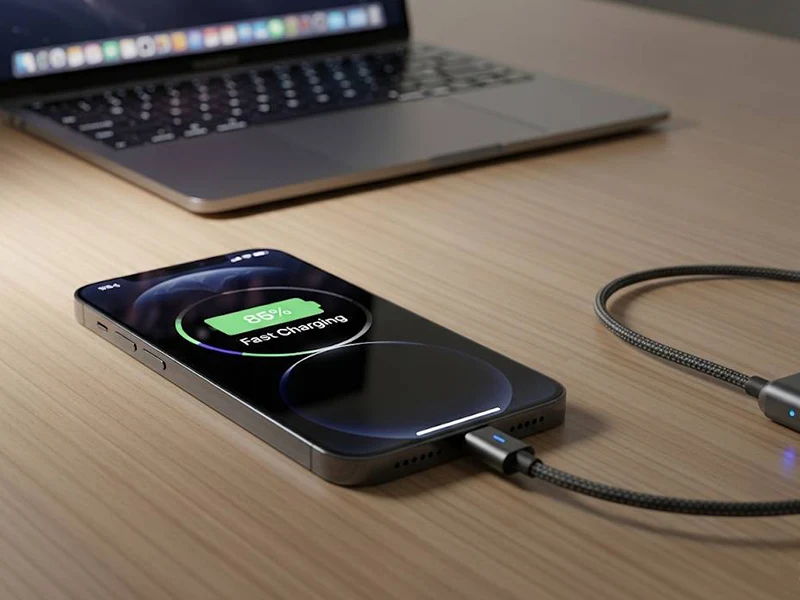No products in the cart.

Fast charging has become a must-have feature in modern smartphones. Whether you use your phone for work, gaming, or entertainment, waiting hours for your battery to reach 100% can be frustrating. However, the speed of charging does not depend only on your phone or power adapter. The charging cable plays a crucial role. Choosing the right cable ensures maximum charging efficiency, device safety, and long-term performance. This guide explains everything you need to know before buying a cable for fast charging.
Different brands support different charging technologies. For example, Qualcomm Quick Charge, USB Power Delivery (USB-PD), VOOC, and SuperCharge are among the most popular. Each standard requires compatible cables to deliver high wattage safely. Using a regular or low-quality cable may limit charging speed or even damage your device. Always check your phone specifications to see which standard it supports.
USB-A to Micro-USB: Older and mostly outdated, suitable only for older devices.
USB-A to USB-C: Common and affordable, but may not support the highest power delivery.
USB-C to USB-C: The preferred choice for modern Android devices, laptops, and tablets. It supports faster charging speeds and data transfer rates.
USB-C to Lightning: Designed for iPhones and iPads, especially when paired with USB-PD chargers.
Selecting the correct type is the first step to achieving optimal fast charging.
Not all cables are created equal. High-quality cables use thicker copper wires and better insulation to handle higher currents without overheating. Certified cables, such as USB-IF certified USB-C cables or MFi-certified Lightning cables, guarantee safety and compatibility. Cheap, uncertified cables may charge slowly, break quickly, or even cause battery swelling.
While longer cables are convenient, they often reduce charging efficiency due to resistance. A cable length of 1 to 1.5 meters is usually ideal. If you need extra length, invest in a premium cable designed to handle higher wattage without losing performance.
Some users overlook data transfer speeds when choosing a cable. If you often transfer files between devices, look for cables that support **USB 3.0 or higher**. Additionally, braided cables offer extra durability, and magnetic connectors reduce wear on charging ports.
1. Check your phone’s charging standard (USB-PD, Quick Charge, etc.).
2. Choose the correct connector type (USB-C, Lightning).
3. Buy certified cables from trusted brands.
4. Keep cable length moderate to maintain efficiency.
5. Consider extra features like durability and fast data transfer.
The right charging cable is more than just an accessory—it’s essential for fast, safe, and reliable charging. By understanding fast charging standards, selecting the right connector type, and investing in certified, high-quality cables, you can maximize your phone’s charging speed and protect its battery health. Remember: a good cable not only saves you time but also extends the lifespan of your device.